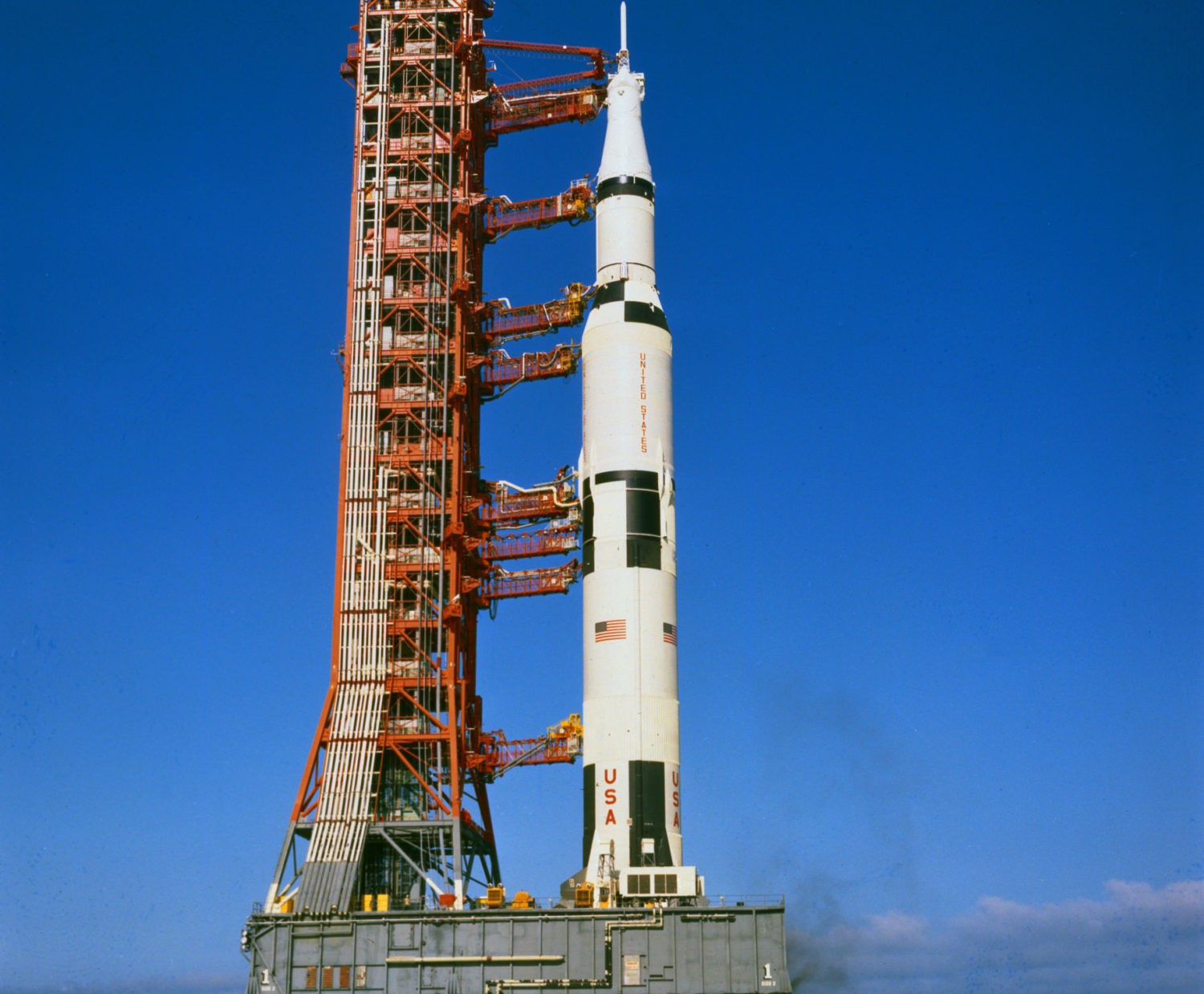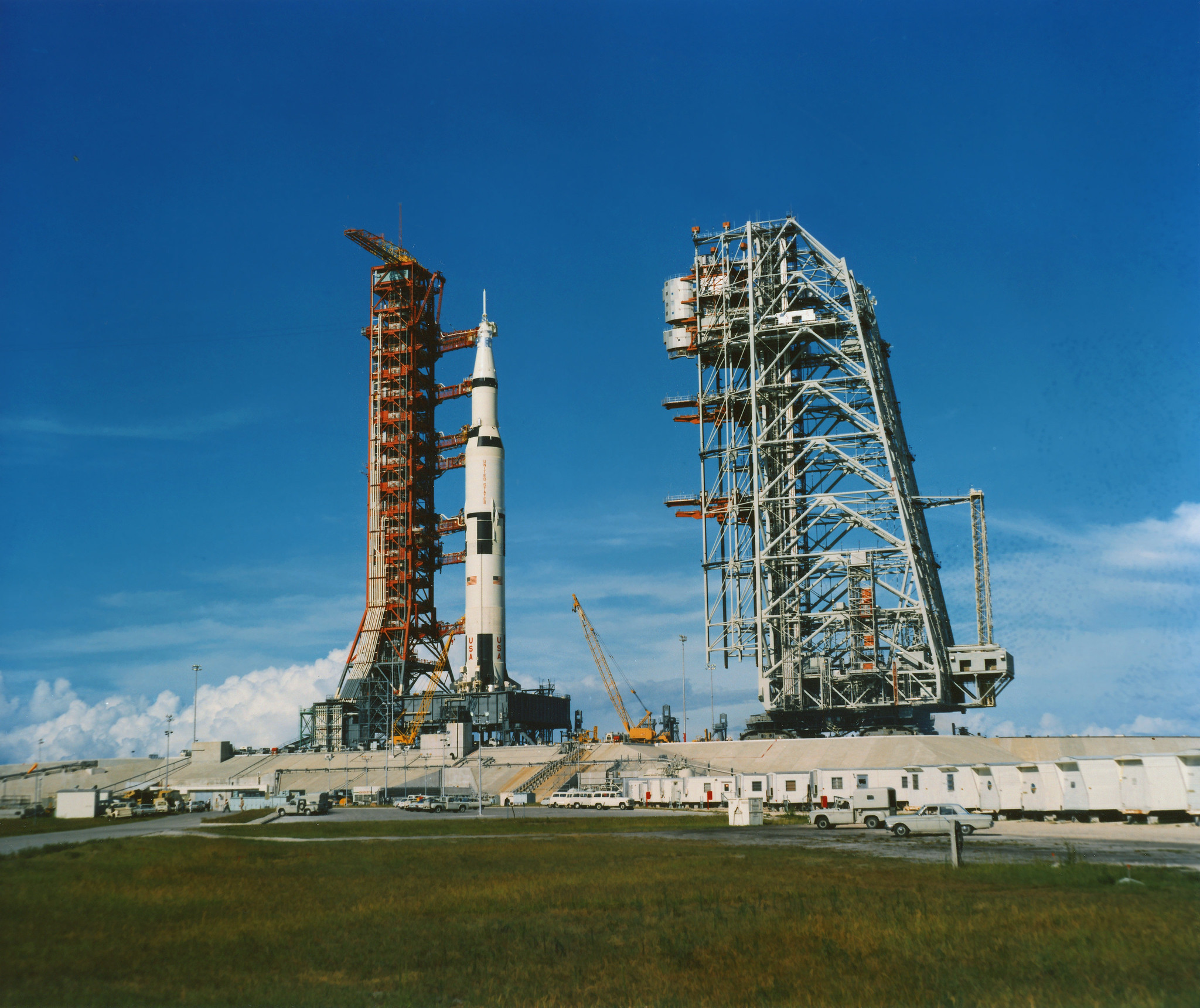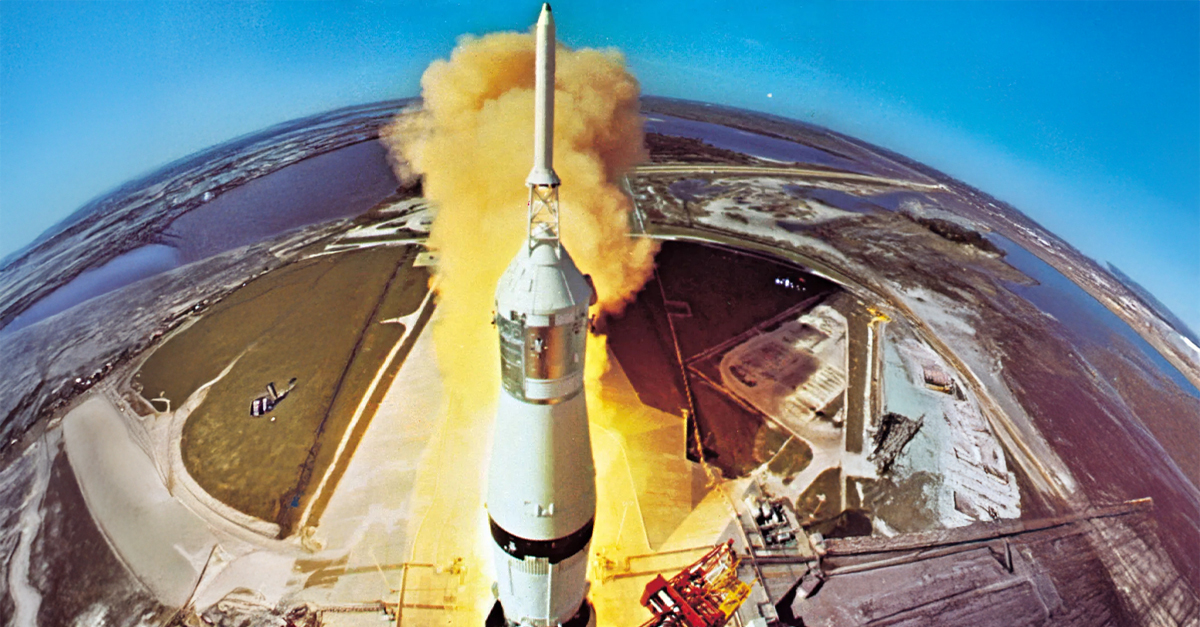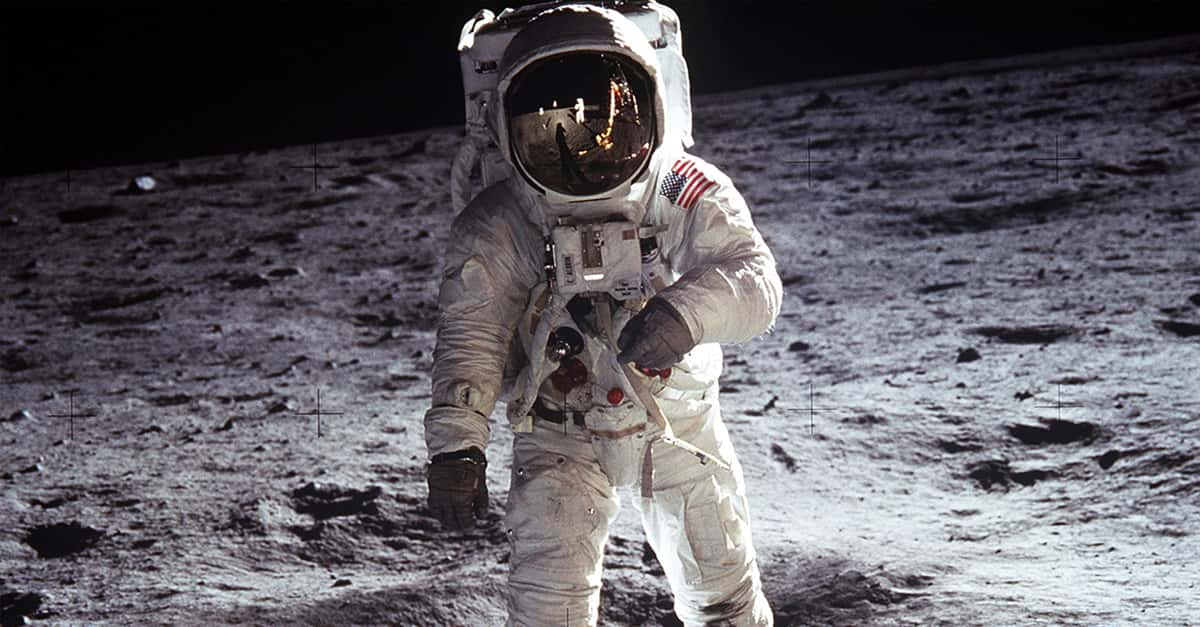To meet the challenge of putting a man on the Moon, the Apollo space program needed a rocket more powerful and advanced than any that had ever been seen before. The final result was the Saturn V, the rocket that would power all six successful moon landings and the launching of the Skylab space station between 1969–1973. Any science buff worth their salt should know a bit about the Saturn V, a rocket like no other before or since.
Towering Above The Competition
The Saturn V had to power a crew of astronauts into Earth orbit to position them for the subsequent launch of the Lunar Module to the moon. This required a complicated launch sequence carried out in stages, so the rocket ended up being immense. At 336 feet long and 33 feet in diameter, it remains the biggest rocket ever built.
 Flickr, Project Apollo Archive
Flickr, Project Apollo Archive
First Stage: Getting Airborne
The bottom section was the Saturn V’s biggest and heaviest section at 138 feet long. It contained the fuel reservoir and five engines to get the rocket off the ground and up to 40 miles above the earth’s surface. Powered by kerosene and liquid oxygen, the first stage burned three tons of propellant per second.
Second Stage: Through The Upper Atmosphere
With the rocket now in Earth’s upper atmosphere, the spent lower section was dropped off and the second stage powered up. This stage was powered by five smaller engines and got the remaining sections of the rocket through the Earth’s atmosphere into orbit. Nine minutes after launch, the second stage dropped off the rocket at an altitude of 109 miles above the Earth’s surface.
 Project Apollo Archive, Flickr
Project Apollo Archive, Flickr
Third Stage: Towards The Moon
Now in orbit, the Saturn V was only 58 feet long. This final stage used its one rocket engine for what was called Trans-Lunar Injection: setting the course for the final trip to the Moon. Once this rocket stage was done, it too dropped away, leaving only the Lunar Command Module to complete the final mission.
Advanced Electronics
While the physical scale of the Saturn V was imposing, its onboard control module was even more impressive. Built by IBM, the instrument board consisted of digital and analog computers that ran the rocket's guidance systems. With a ride that saw humans thrust into space in under ten minutes, the split-second timing of the rocket stages and their firing sequences had to be carried out by the control unit.
Strong Support
Getting the Saturn V into position was a major engineering effort itself. The Saturn was assembled vertically in place in its own specially built structure and then rolled into position with its launch tower on a huge 3,600-ton platform on treads. The Saturn V itself weighed an additional 3,300 tons.
An Awesome Spectacle
There were few experiences more spectacular than the final countdown and liftoff of the Saturn V at Cape Canaveral. After the initial firing of the engines, the Saturn V took eight seconds to get off the ground, and 12 seconds to clear the tower. The astronauts at the top of the rocket were subjected to 4 G of force on their ascent through the sky.
A Milestone Of Human Progress
The Saturn V showed what NASA engineers were capable of when given a virtually unlimited budget and a tight project timeline. But the Saturn V was more than a marvel of technology; it was a major benchmark in the history of human progress. It remains the most powerful rocket ever built and flown by humans. Today’s rockets follow in the Saturn V’s path to a great future of space exploration.
You May Also Like:
Celestial Facts About Apollo 13, The Disaster In Space
Mind Exploding Facts About Rocket Science












